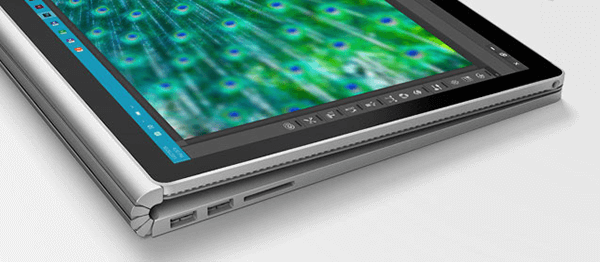Everything you thought you knew about Microsoft Surface devices is a matter of perception: welcome to the real world.

Away from marketing pitches, the quickest way to explain the benefit of a Microsoft Surface Pro, Book, or Studio, is by using these devices, first.
Presenting a Surface Pro for what it actually is, can be often a tough sell, because of the preconceived notion people have about tablets, aside from the Apple iPad Pro.
Tablets are seen often as slower, simpler devices, better suited as bigger companions to mobile phones. Streaming Netflix, browsing the web, and using simple mobile apps is the extent of the understanding some users have in regard to tablets, and it’s a logical assumption.
Regular users don’t have an interest in keeping up with the latest tech. Most will learn about a new technology, for the very first time, when they see it in a store, after a salesperson shows it to them.
This is why department stores are peppered with demo pavilions and booths, where brand new tech is on display with a big bold spotlight on top.
This is why the industry has come up with alternative definitions for these new devices, such as “hybrid laptops” and “ultraportables”, in an attempt to spark a conversation about “...This cool new thing that is definitely not a ‘tablet’...”.
The word “tablet”, much like the word “computer”, is often equal as saying that thumbs are fingers, but not all fingers are thumbs. Tablets, smartphones, laptops, desktop PCs, are computers, but not all computers are any one of these things.
By the same token, Surface Pro tablets are powerful computers on which we do a whole lot more than playing Fruit Ninja, and stick to minimalist store apps.
When adding the prefix “Windows 10-” to “tablet”, the message is “this is a PC powerful enough to run a desktop operating system”, with no room for compromise. Either it does it, or it doesn’t.
When Microsoft unveiled the Surface Studio last year, everyone, including long time Windows PC users, expected the rumored desktop as a mild disappointment at best. Instead, they got a product with the serious potential to deliver blows to the iMac, if it weren’t for the serious price tag.
$3000 is a lot to ask from regular consumers looking for an alternative to the iMac, which is why the only way to truly understand why Surface Studio is an amazing device, is by actually interacting with it. Also, you have to be a creative type of person to appreciate the stunning touchscreen display, the only one that can turn into a functional drawing table.
Surface Book is another example. Microsoft didn’t pitch the Surface Book against the MacBook. Not directly, or explicitly anyway, because it is not a MacBook. It’s a Surface Book.
You may be fooled by the thin machined-aluminum body, or the bright, thin-bezel display, but make no mistake: the Surface Book as as far from the MacBook as it should be... as it should be.
Once again it comes down to direct experience. Try it for a few minutes, flip the screen around, or detach it, and you will agree, it’s a device with the potential to fulfill every conceivable use case, swiftly and efficiently.
The bottom line is that preconceived notions are what drives the market, unfortunately, and the tech industry is barely starting to master the subtlety of delivering complex messages in a way that can be understood by those would could have many uses for new tech, but aren’t aware of their actual potential.
Apple is about the only company in the world with mastery of this craft that goes back forty years, which is why no one needs to understand what an iPad, or a MacBook are, and if Microsoft has learned anything from its biggest competitor, it will stick to the Surface brand, until consumers become comfortable with the idea that a Surface device is what they need in their daily lives, transcending what it is, or the tech that powers it.
Ready to shop?
PortableOne has the best deals on Microsoft Surface Book laptops, and more powerful devices for work and downtime.